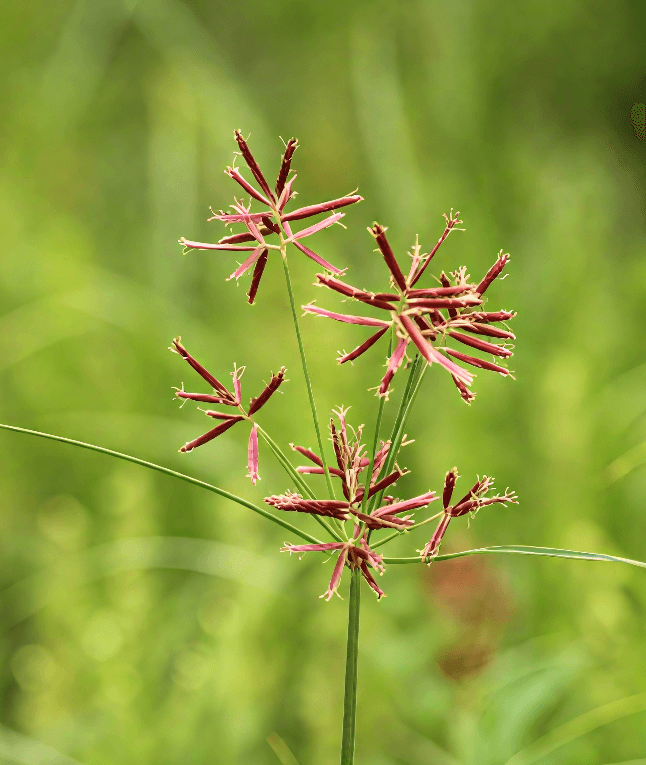Pyroxasulfone, may be will become the next new mainstream popular herbicide
1.Introduce
1.1. Origin
Pyroxasulfone was first discovered and developed by Masao Nakatani and others from the K-I Chemical Research Institute in Japan. It was then jointly developed and industrialized by Kumizu Chemical Co., Ltd. and Ibara Chemical Co., Ltd. It is a new, broad-spectrum, highly active, low-dosage and safe pre-emergence soil treatment herbicide.
1.2. Development prospects
Under the current situation where the EU has banned setochlor and isopropylamine, it can be considered that sulfamethoxazole will gradually replace widely used chloroacetamide herbicides such as setochlor and isopropylamine, and become a new mainstream herbicide variety with great application prospects.
1.3. Mechanism of action
It is a very-long-chain fatty acid elongase inhibitor herbicide. After application, sulfonepyraclostrobin is absorbed by the young roots or shoots of weeds. It inhibits the biosynthesis of very-long-chain fatty acid elongase (VLCFAE) and causes the construction of fatty acid precursors. It can inhibit the early growth of seedlings, destroy meristems and coleoptiles, and exert its efficacy.
1.4.Unique advantages
Although its mechanism of action is similar to that of chloroacetamide herbicides such as acetochlor and metolachlor, it is applicable to a wider range of crops, has much greater biological activity than acetochlor and metolachlor, and requires a lower dosage; its dosage per unit area is 8 to 10 times lower than that of acetochlor and other chloroacetamide herbicides, so its weed control effect is better.
2.Why choose Pyroxasulfone?
2.1. Broad spectrum of weed control
Pyroxasulfone can effectively control more than a dozen annual grass weeds such as barnyard grass, bluegrass, crabgrass, Setaria, goosegrass, wild oats, ryegrass, wild millet, and control or inhibit more than a dozen annual broadleaf weeds such as Amaranthus oleraceus, Amaranthus retroflexus, Purslane, Solanum nigrum, Chickweed, Chenopodium album, Datura, Abutilon, Shepherd's purse, and Lophatherum truncatum. The above-mentioned weeds cover almost all the important weed species in common dryland crops in many countries. Therefore, Sulfonepyraclostrobin has the same applicability even in the world.
2.2. Wide range of applications
Pyroxasulfone is widely applicable to crops, such as corn, soybean, cotton, wheat, sunflower, potato, peanut and other major crops, to control annual grass weeds and broad-leaved weeds.Pyroxasulfone cannot inhibit the synthesis of very long chain fatty acids VLCFA in several tolerant crops such as corn, wheat, and soybeans, but can effectively inhibit the synthesis of VLCFA in weed plants. Therefore, it has formed good selectivity among the above-mentioned crops and weeds, and is safe for tolerant crops.
2.3.Good prevention effect and long lasting effect.
According to a series of field trials, its control effect on almost all weeds such as ramie, ragweed, broadleaf brachiaria, millet, and foxtail is better than isopropylamine, and the control effect is stable for up to 63 days after spraying; under drought conditions, its effect on controlling green foxtail, tribulus terrestris and amaranth is better than isopropylamine; the effective period of low-dose control of various weeds is also longer.
2.4.High activity and low dosage.
The dosage per unit area is 125~250g a.i./hm2, which is 8~10 times lower than that of acetochlor and metolachlor, and is only equivalent to 12% of the dosage of S-metolachlor and 10% of the dosage of acetochlor, and the weed control effect is very good.
2.5.Good compatibility with other herbicides.
Many researchers have proved that it has a wide range of compatibility. For example, when mixed with mesosulfuron-methyl , diflufenican, atrazine, carfentrazone-ethyl , fluthiacet-methyl , saflufenacil, flumioxazin , sulfentrazone , etc., and used on corresponding crops, it can achieve excellent complementary weed control effects.
For example, when used on corn, it can be compounded with atrazine, nicosulfuron, metribuzin, metolachlor, cyanazine, bromoxynil octanoate , mesotrione, topramezone , etc. for blocking and combined use. When used on wheat, it can be compounded with flufenacet, diflufenican, trifludimoxazin,aclonifen, isoproturon, halosulfuron-methyl , thifensulfuron-methyl , cypyrafluone, bipyrazone , florasulam , etc. as soil sealing treatment agents, and rarely compounded as stem and leaf treatment agents. When used on soybeans, it can be compounded with imazamox , oxyfluorfen, oxadiazon , fomesafen, etc. to seal stem and leaf treatment agents. When used on cotton, it can be compounded with flumioxazin , etc. for sealing treatment. It can be mixed with glyphosate after seedlings in glyphosate-resistant corn fields to prevent and control weeds for a long period of time; it can be mixed with atrazine in pre-bud treatment in sorghum fields.
2.6. Good safety.
A large number of field trials of sulfonepyraclostrobin in corn fields have shown that the use of sulfonepyraclostrobin did not cause any significant damage or yield reduction in corn. Only occasionally, corn leaves were found to curl temporarily, but then quickly returned to normal growth, indicating that it is safe.
3. Usage:
When used on crops such as soybeans, cotton, peanuts, and potatoes, 25 to 30 ml of Pyroxasulfone 40% SC can be diluted with 15 to 20 L of water for soil spraying from sowing to the early stage of emergence, which can effectively kill all weeds; when used on winter wheat, 25 to 30 ml of Pyroxasulfone 40% sc can be diluted with 15 to 20 L of water for soil spraying from sowing to the 1.5 leaf stage of grass weeds, when the soil moisture is good or after irrigation or rainfall, which can effectively kill most weeds in winter wheat fields.



